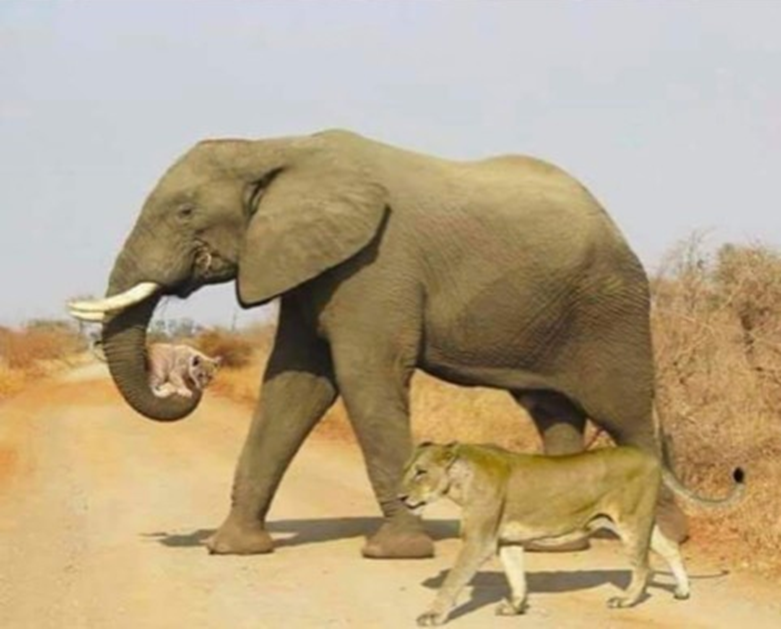A lioness and her
cub were crossing the savannah, but the heat was excessive, and the lion cub
was in great difficulty. An elephant realized that the cub was dying and
carried it with its trunk to a puddle, walking next to its mother.
And they are called
wild animals!
From a very young
age, I have been fascinated by this African animal. This animal is remarkable
in many ways. Its imposing size and the distinctive presence of its proboscis,
equipped with two membranes at its tip, make it remarkable, like two skilled
human fingers. Its weight can reach 8 tons. Unfortunately, it is frequently
poached because of its precious tusks, which are essential for its food and
protection. In these herds, it is the leadership that is provided by the
females, setting up a system of matriarchy, a social structure that differs
from that observed in the human species, where domination is often exercised by
males.
The horses we kept at
home consumed about 10 liters of water per day, a negligible amount compared to
the 150 liters an elephant needs to drink. Regarding plant-based food,
elephants consume between 200 and 300 kg, while our horses are satisfied with 5
kg of grains and prairie grass. The horses received regular care, including
grooming, deworming, and vaccinations, which contributed to their average
lifespan of 30 years. Elephants must rely on their acquired immunity to face
the various dangers present in the savanna and the forest. That is why they can
only reproduce at the age of 30, even though they reach sexual maturity around
the age of 12. Their average lifespan is around 70 years, but they can live up
to 100 years. The expression "to have an elephant's memory" comes
from these animals' remarkable ability to recognize places and individuals even
after many years.
In August 2024, the Namibian government
recently announced its plan to cull 83 elephants, 30 hippos, 60 buffaloes, 50
impalas, 100 blue wildebeests, 300 zebras, and elands on its territory. The
government's decision to task professional hunters with the culling of these
wild animals is motivated by the goal of providing meat to distribute to the
population in food insecurity. The country has been impacted by a severe
drought that has led to the devastation of food stocks and crops. It is
anticipated that 50% of the population will face food shortages in the coming
months. The number of animals in parks and protected areas exceeds that of
animals in pastures and water reserves. The 157 animals that were sacrificed
generated a total yield of 57,000 kg of meat. Wildlife protection advocates
have strongly criticized this disastrous hunting program and have launched a
petition to demand its immediate cessation. No environmental impact assessment
or precise animal census has been conducted. We must understand that human
subsistence takes precedence over that of animals, of course, but it's so sad
to have to come to this.





No comments:
Post a Comment